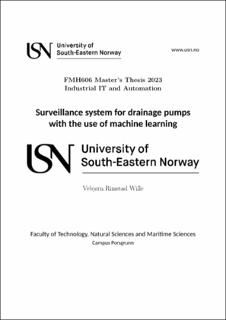| dc.description.abstract | Bergene Holm AS, Avd. Kvelde is a planer factory, surrounded by vast fields that are susceptible to flooding. This thesis looks into the possibilities of building upon the Tokyo Amesh system. The objective is to investigate the feasibility of regulating a storm water facility, or predicting the inflow into the storm water facility with the use of machine learning. To achieve this, an IoT device was built to log and monitor the storm water facility. The collected data was combined with local weather station data, processed, and exposed to a machine learning algorithm for training to predict inflow into the sump tank. Both Long Short-Term Memory networks and Transformer encoder networks were used to train on this time series data to be able to learn multidimensional correlations between the local weather station data and the logged water level of the sump tank within the storm water facility. Both Long Short-term memory and Transformers showed promising results in the prediction, but fell short of being used as either a forecast system or a control system, due to the limited data of the level of the sump tank. The lack of a longer logging time severely impacted the performance of the machine learning networks, as they were not able to achieve acceptable performance. However, due to the promising results, improving this system in the future is highly possible. | |
